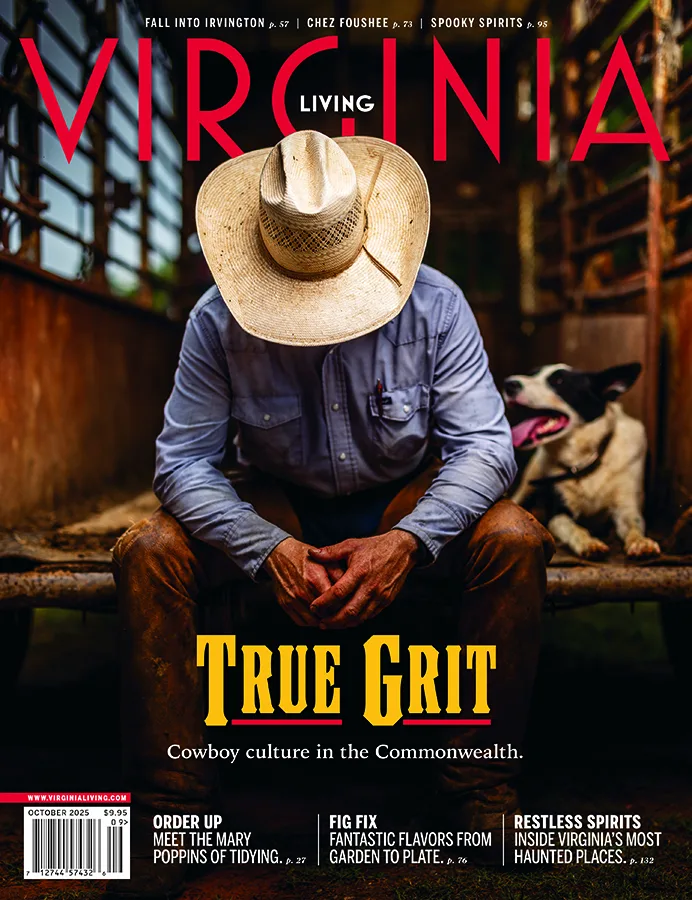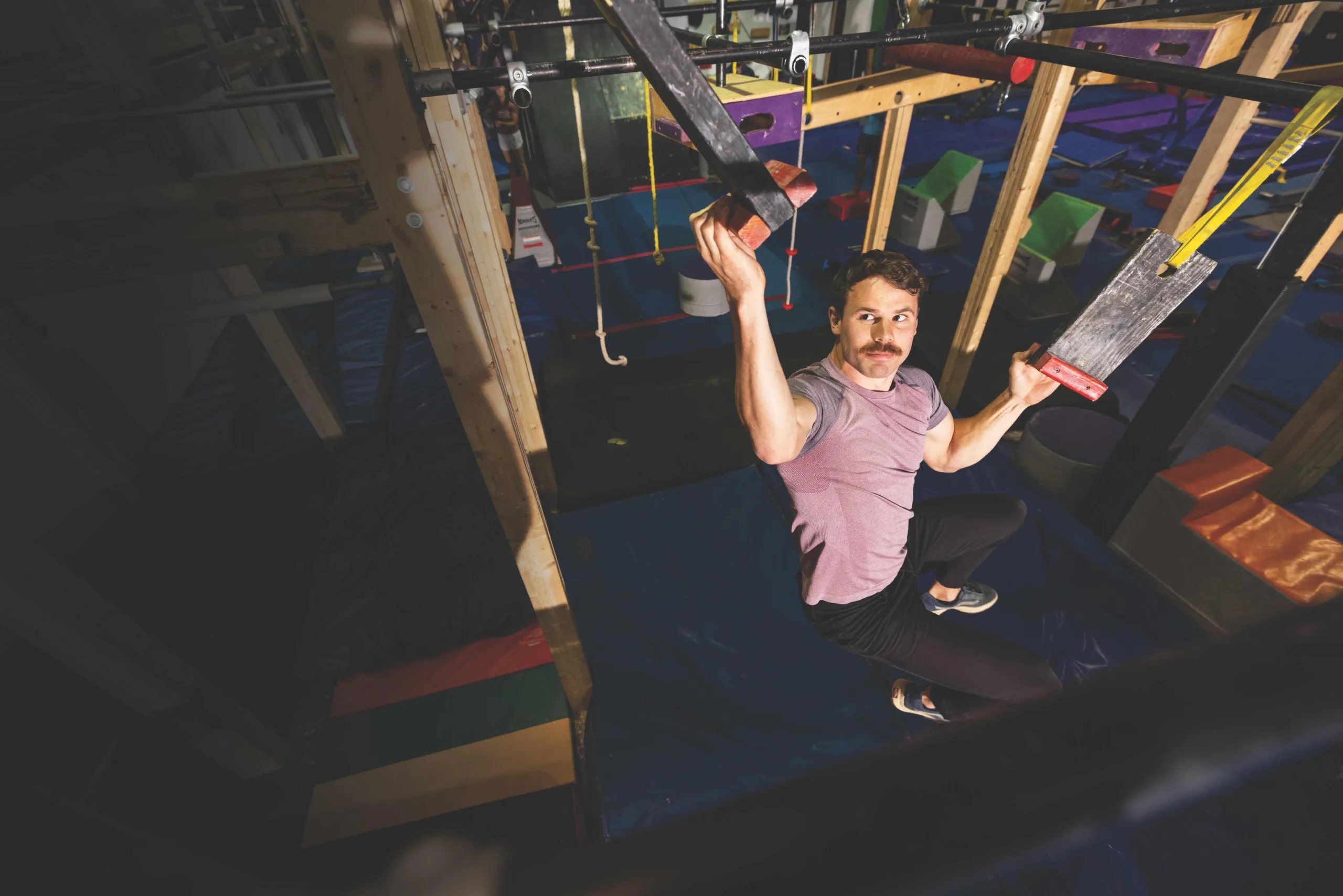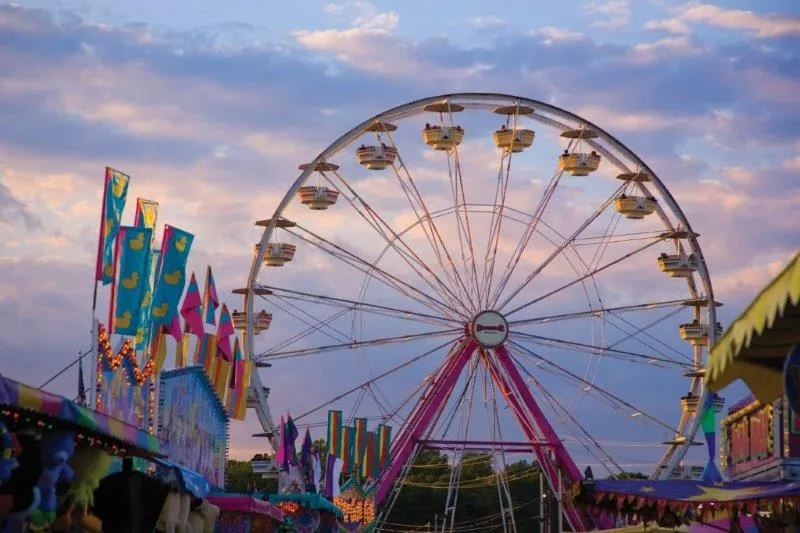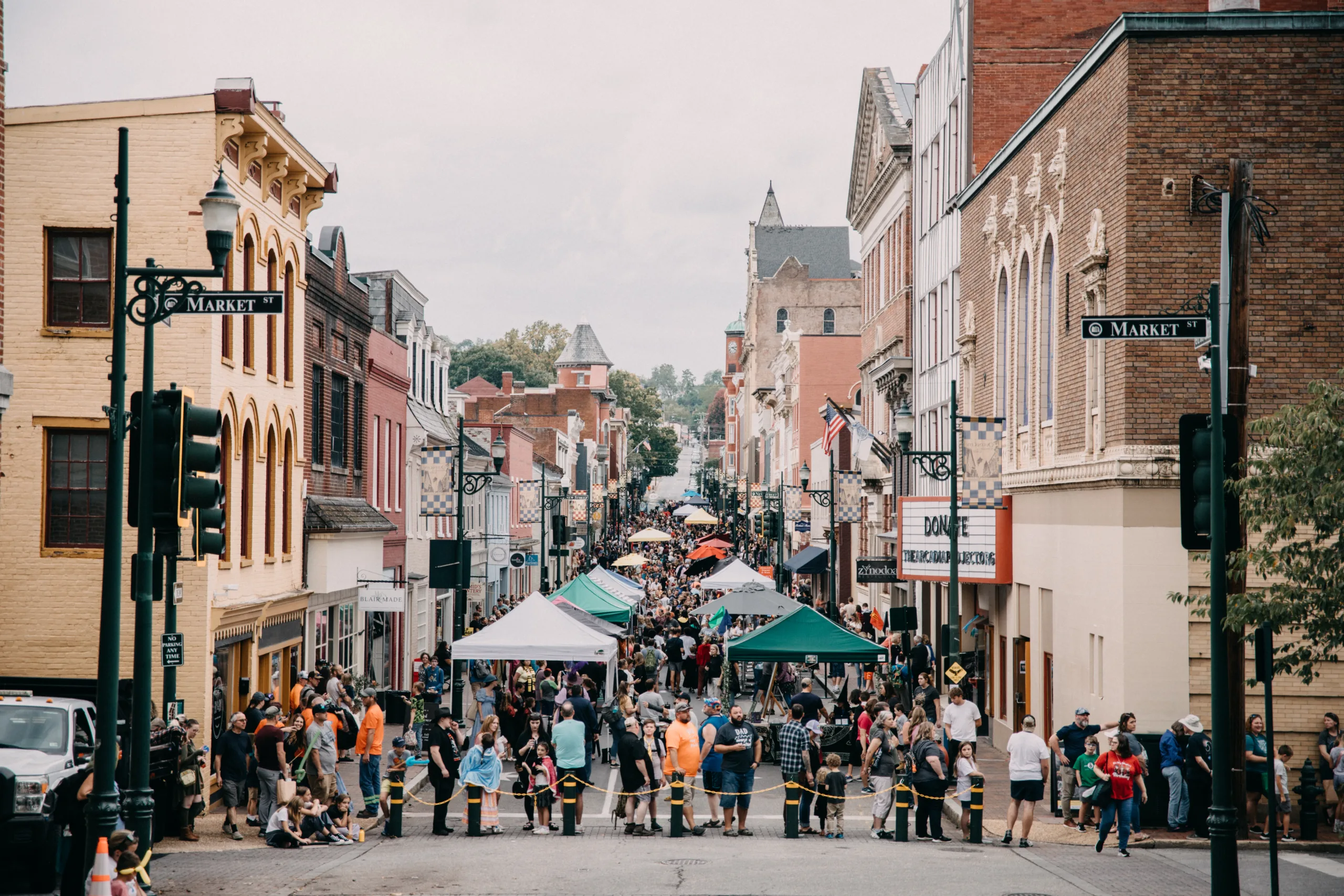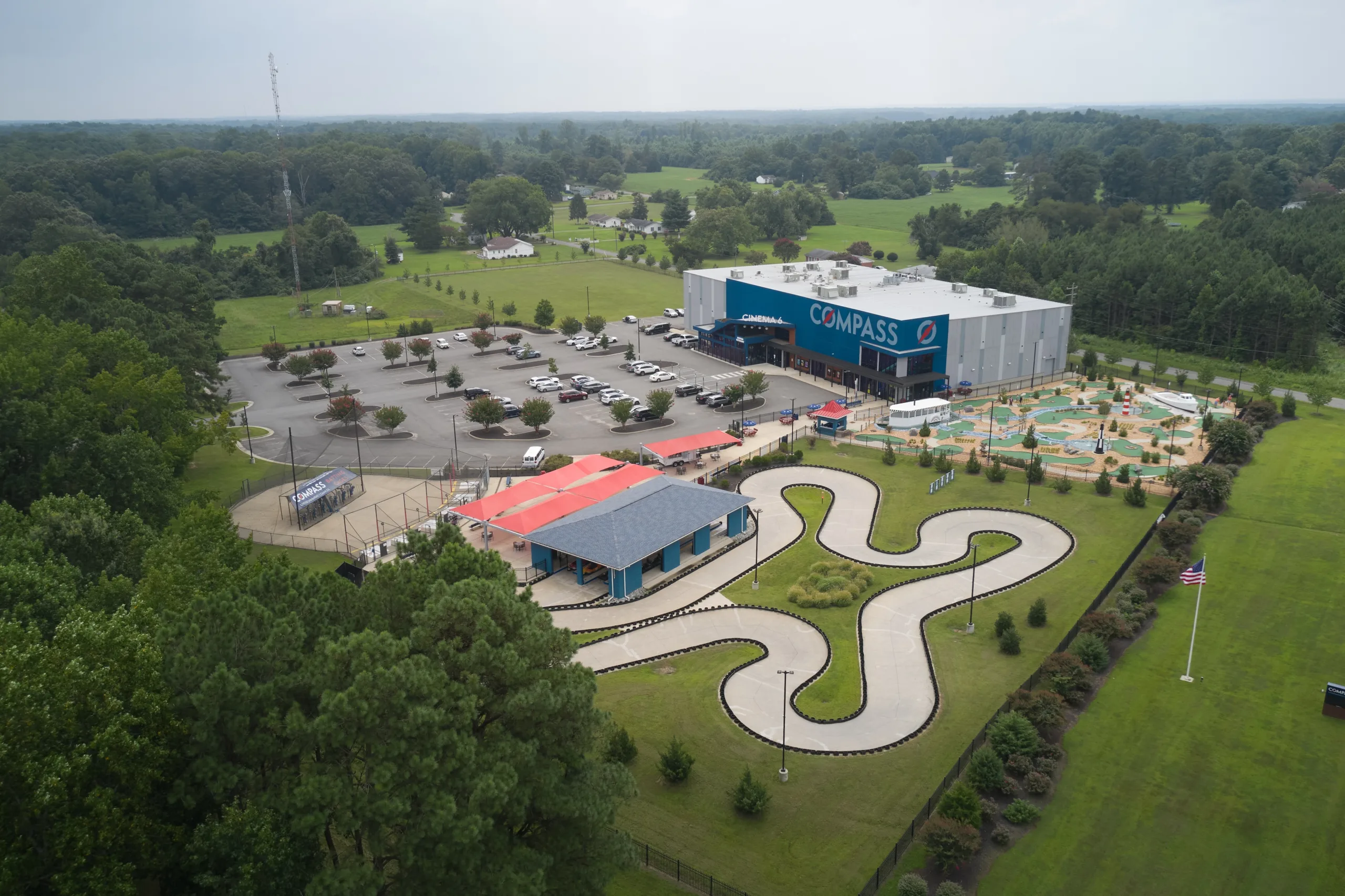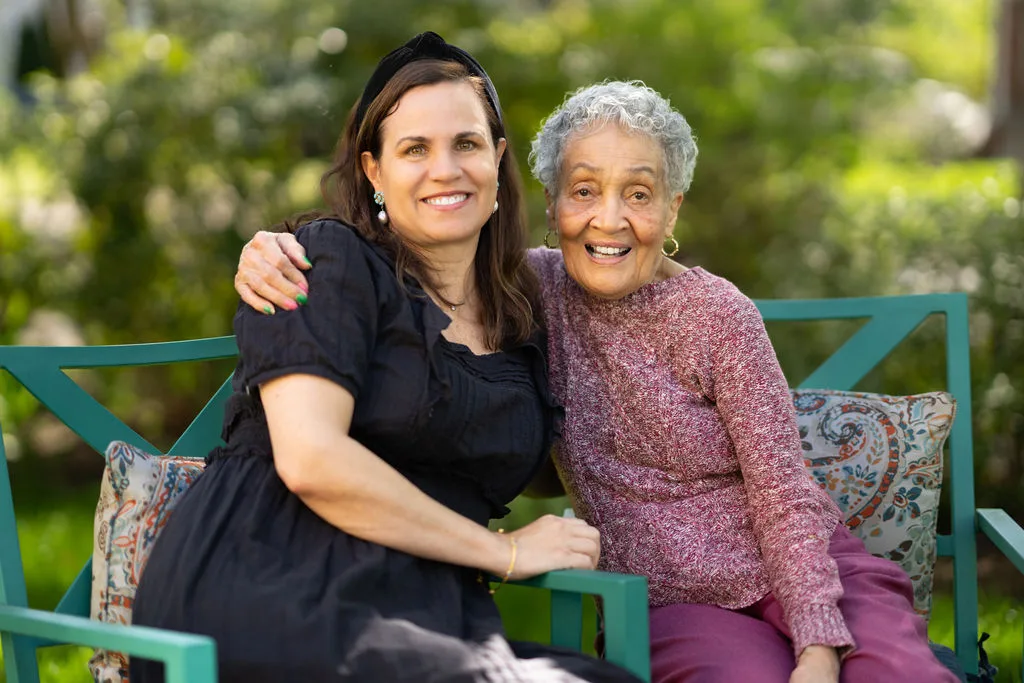One theme that connects us all—children and adults—is a love for adventure. In parks and
playgrounds, children chase daydreams, climb hand-over-hand, and fly from swings, as their stories transform the familiar into the fantastic.
Cut to 2025, where we have a dizzying obstacle course built for adults, one that uses the stuff that dreams are made of. This revamped jungle gym is more than the sum of its steel pipes—sharing DNA with the adventures that gave us matinée heroes like Indiana Jones.
Today, the hairy circumstances of heartracing newsreels and old books now appear in a game-show so popular that it has given rise to a new family culture around the country, including here in Virginia. In NBC’s American Ninja Warrior (ANW), contestants inch along, leap, dash, or wobble across a series of barriers, or otherwise languish upside-down from ridiculous heights. The hero is the guy or gal next door. You might even recognize your own neighbor as he dangles before millions of viewers.
With an audience in the millions, ANW ratings are higher than those of an average 2024 NBA game. The show is a spinoff of Sasuke, a Japanese TV program in which a few Americans occasionally participated. In the U.S., ANW evolved from hosting competitions in select cities to filming all finals in Las Vegas. The Virginia contestants are not exactly footloose and globe-trotting explorers, of course, like Indy and his arch-nemesis, René Belloq. But they’re equally remarkable in grit and determination.
Unlike a romantic quest to find lost cities, ANW is not about finding treasure, nor an egocentric clash between rugged individualists. It is more of a blend of swashbuckling adventure with the so-called “hero’s journey”—a hero who must overcome extraordinary challenges along the path to identity formation. As they pass through the game-world, these Virginia players found new riches beyond purloined gold.
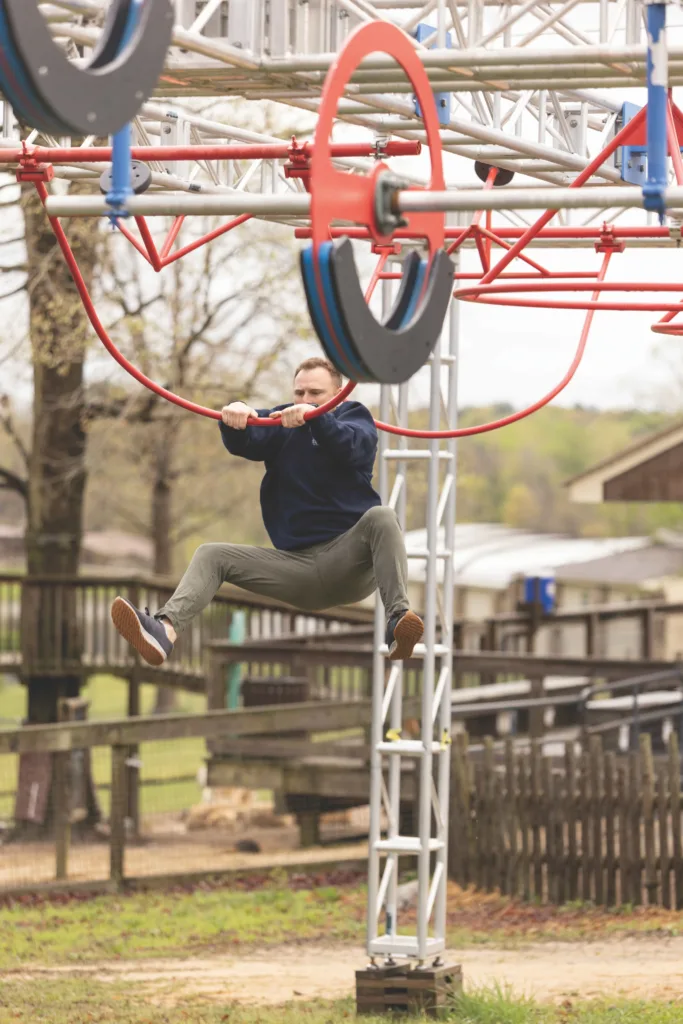
CAMARADERIE
“I very vividly remember my first season stepping on the starting block. I wasn’t scared, I wasn’t nervous,” says Chad Thornhill, a season 13 and 14 ANW contestant. “I felt grateful and loved, and it was so cool, so fun .… to have friends on the sideline there cheering me on made it such a personal experience.” A residential chair and professor in biblical theological studies at Liberty University, he is also the founder of Elite Athletics Gym in Lynchburg, which he started three years before he went on the show. Elite is spacious and rigged out with ninja obstacles and floor mats. He and a cohort of friends all train at his gym regularly.
“It gets a little spooky up there,” Thornhill says, referring to the dizzying heights contestants face, ranging from 12–80 feet. “You have to commit to what you’re doing. One obstacle gradually ascended up to 40 feet in the air, and underneath it was a really big airbag. When [Josiah Singleton] won, they made him jump down, and he’s really afraid of heights.” The irony is that Singleton, the group’s training partner and director of missions and outreach at Hyland Heights Baptist Church in Rustburg, had to confront his biggest fear after claiming victory.
Just as a football fan at home might think they can play better than the pros, Ninja Warrior inspires us all to imagine showing off our skills. Contestants face a series of obstacles, each higher and more difficult. With spinning handles, whirling doors, collapsing floors, leaps of faith, and running up walls, the course feels like a frantic escape from a collapsing building during an earthquake.
But there’s more to it still. And it’s here that the hero’s inner and outer journey intersect. Players dangle perilously above steel replicas of jungle streams and cliffs reminiscent of the adventures that inspired Indiana Jones. With scaffolding as a story arc, players tap into an unknown resilience and cleverness to realize a new identity.
Yet, so many fail—and fall. When a contestant like Singleton makes it to the finals, he faces the ultimate challenge of the season: the majestic and menacing Mount Midoríyama. This tower of steel pipes rises into the night sky of Las Vegas, glowing like a smoking volcano. A rope hangs 75 feet—eight stories straight up. He must climb it in 30 seconds.
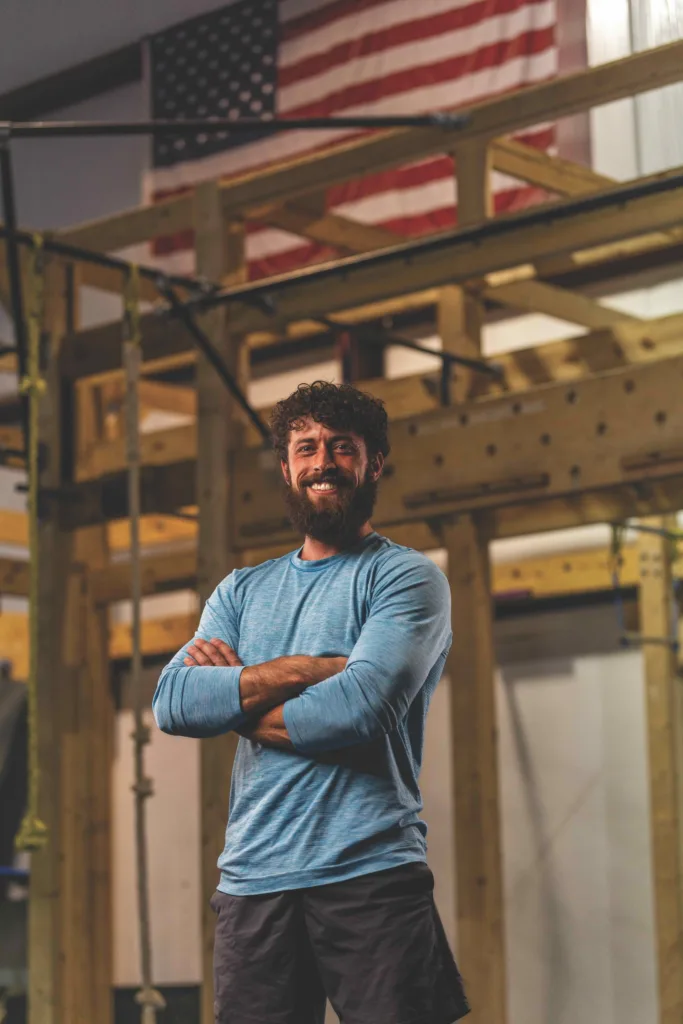
Josiah Singleton
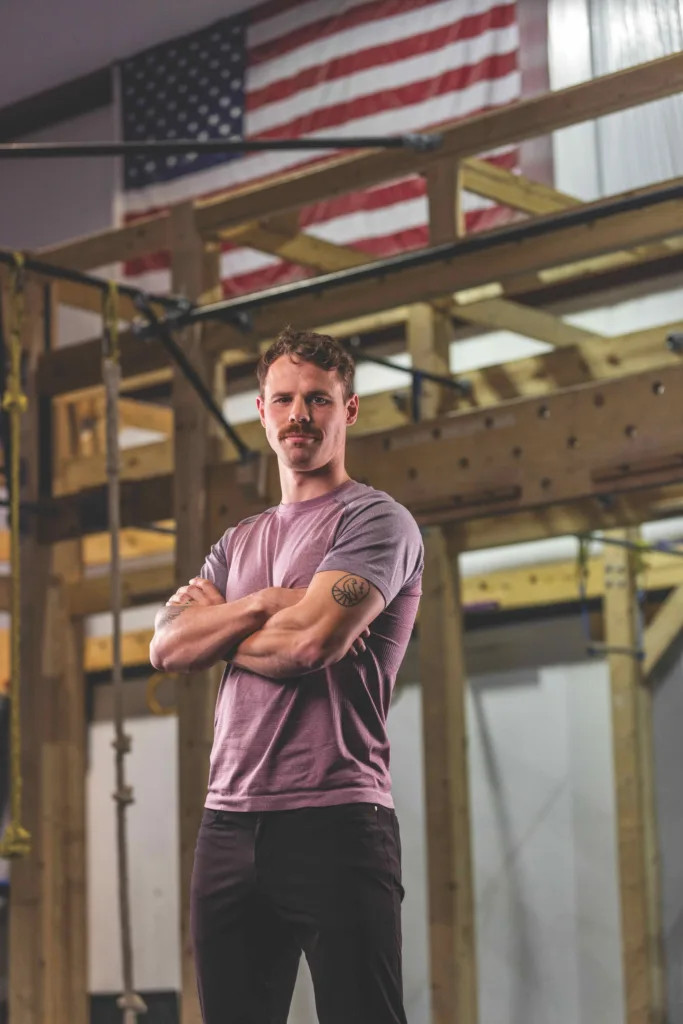
Jeff Loftus
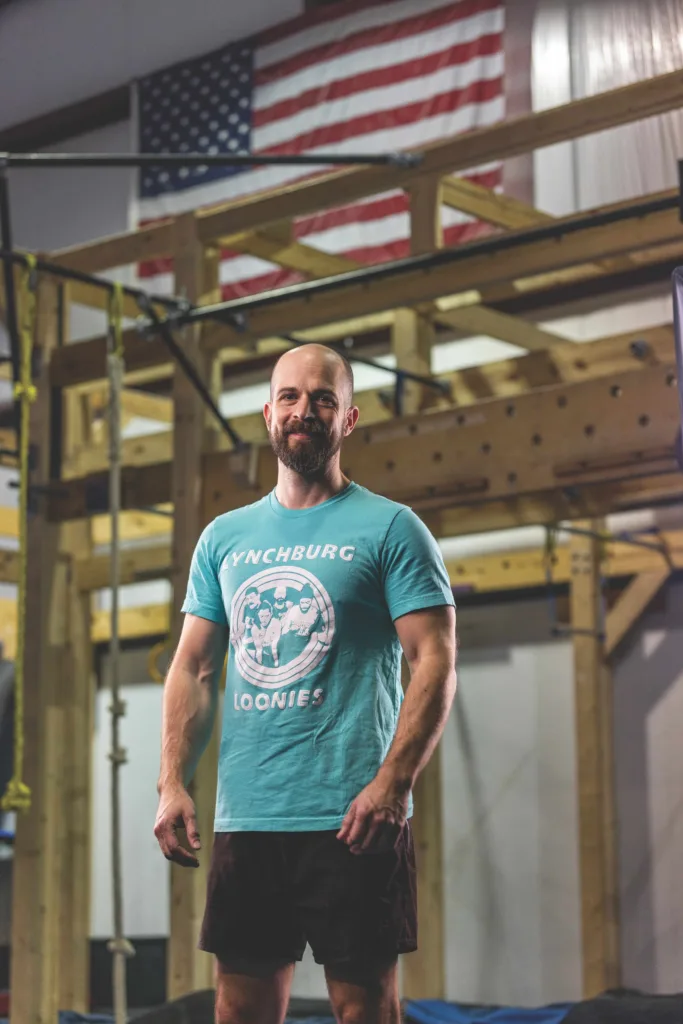
Chad Thornhill
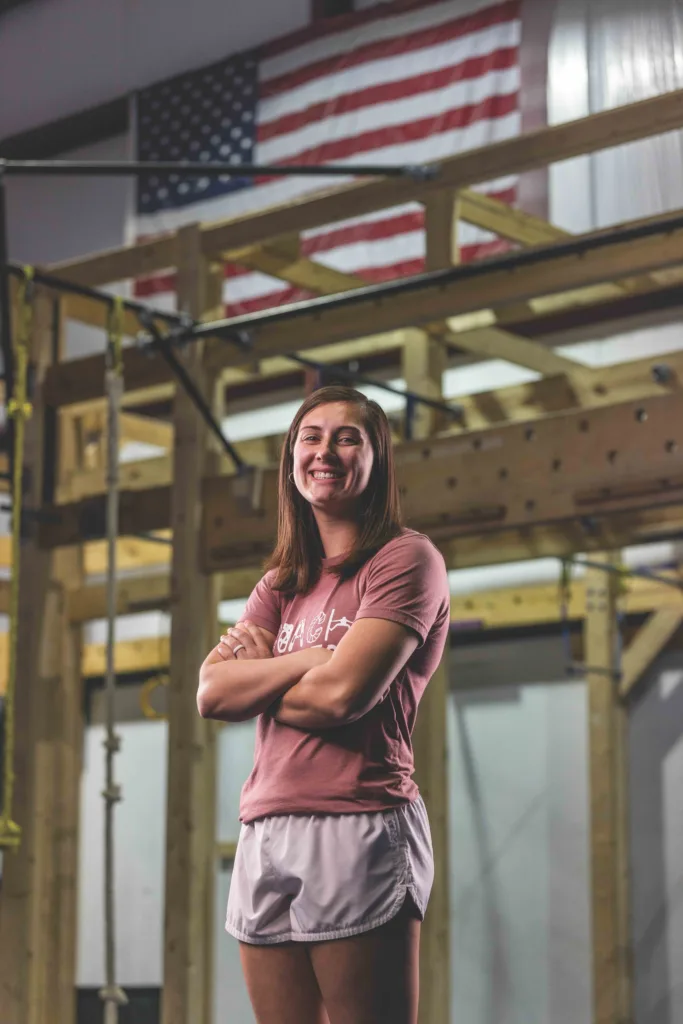
Carrington Hammond
“I got up to 80 feet once, and it took me
three minutes,” Carrington Hammond says, recalling her attempt at beating the final challenge in training. A special education teacher at Rustburg High School who built a gym in her own backyard, she faced ANW twice—in seasons 14 and 16. “It’s not 30 seconds, but, hey, I’ll take it.”
At the top of Mount Midoríyama, contestants must smack a big red button to trumpet victory.
What’s it like to hit the buzzer?
“It felt good,” Singleton says simply.
“He’s the only one who’s had a lot of success,” Thornhill says, referencing Singleton’s run to the ANW season 14 finals. “We’ve all had a lot of failure,” he adds with humor.
Former Liberty student Jeff Loftus, now a mechanical engineer, met Thornhill when he came to an open night for prospective Ninja Warriors at Elite. “I think for me the main thing,” Loftus says, “is the friendships we form.”
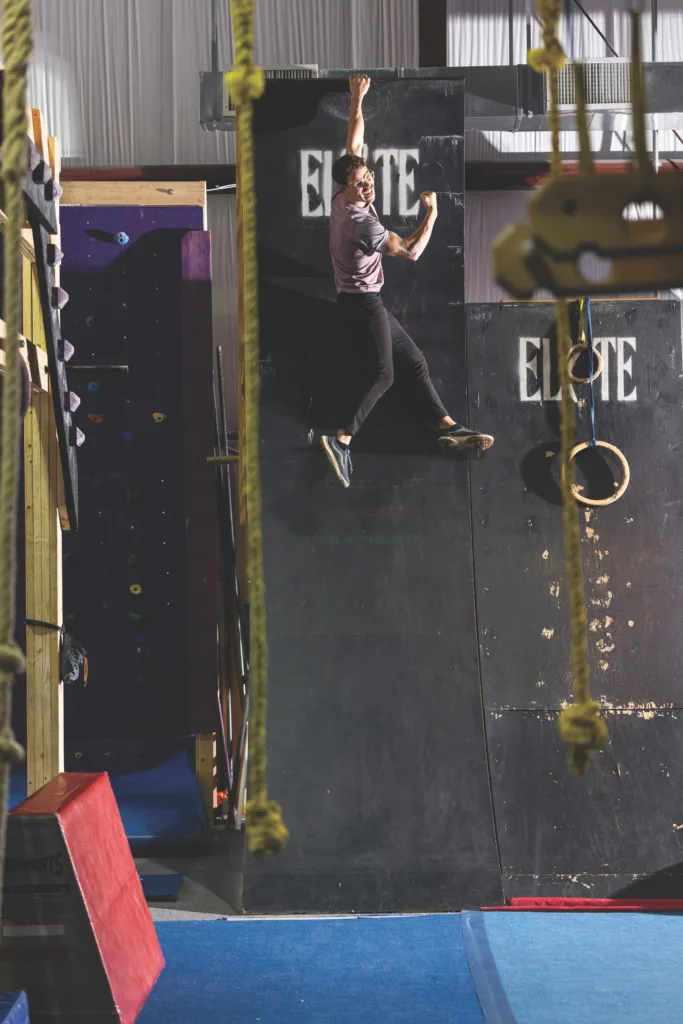
Loftus gives a celebratory flex after a successful run up the curved wall.
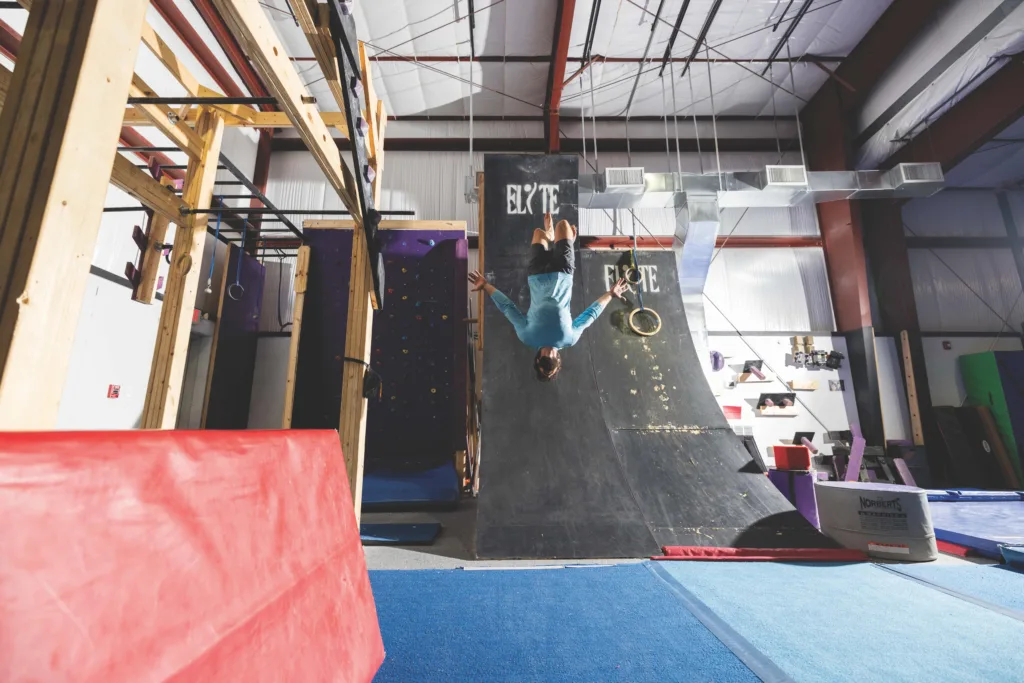
Josiah Singleton uses a curved wall obstacle to complete a running backflip.
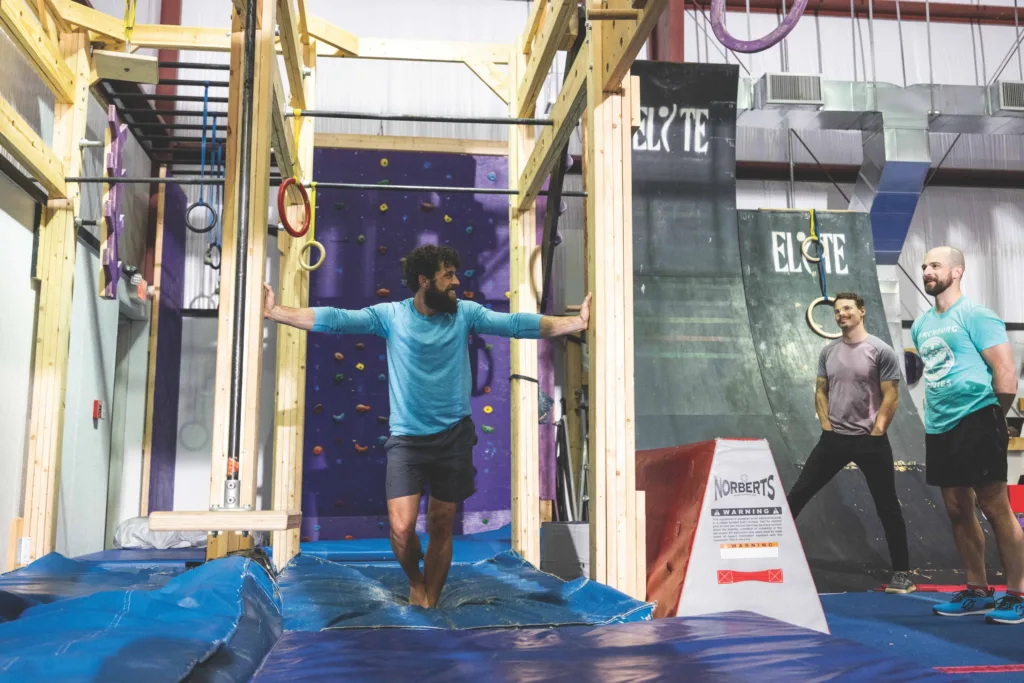
TRAINING
They all required years of training before they were strong enough to get through the obstacles, mixing cardio with calisthenics to get the balance right.
The main training tip from the contestants is to change your sleep routines, because ANW is filmed at night to control the lighting. This was the most unexpected challenge, but others surfaced. The night before filming, the production team gives participants a tour of the new course under construction. A stunt person demonstrates the obstacles and the best way to perform the maneuvers, sometimes falling in the process. If anyone touches any obstacle, even with just one finger, they get sent home immediately under a security escort.
The nitty gritty of training varies, and the show’s popularity has inspired more than a cottage industry as Ninja gyms open and suppliers build obstacles to install, Thornhill says. Not everyone follows the path into the gym.
Justin Andelin’s training was inspired, if unconventional. As the son of the owner of the Metro Richmond Zoo and now its general manager, Andelin grew up in the company of African animals. He loved to watch the monkeys most of all. The power, ease, and grace with which they would swoop by in the branches prompted him to imitate them, which led him to ANW on three occasions. Although he had great hand-strength, he found the obstacles unfamiliar and surprising. He was obsessed at the time with his dream to become a stunt man—which he figures is probably true for most Ninjas.
For Adriane Arvold, a 30-year-old equestrienne from Middleburg’s horse country, her training came indirectly from her daily workouts in dressage.
“Most of the people you see do really well on Ninja Warrior are not large and muscular muscle-mass-wise, but their grip-strength is really good,” she says. Hauling water buckets up and down hills every day and carrying hay bales—more than riding—builds strength and grip like nothing else. Even though she is a U.S. Dressage Federation Gold Medalist, she has a more unusual way of training.
Arvold pushed herself through extreme training, running various grueling obstacle courses for 24 hours straight until she logged 70 miles, including competing in BattleFrog Atlanta in 2016, a Navy SEAL–inspired competition. In that event, she ran a 5-mile loop with 26 obstacles for 24 hours. She came in third that year in spite of an additional 13 miles of penalties for a total of 83 miles. All this, just a week before Ninja.
Not knowing the particulars of how ANW operated and having focused solely on running, with no Ninja training, Arvold didn’t realize the competition would run all night. Waiting in a cold holding area, she didn’t compete until 4 a.m. her first time on the show in season eight. Exhausted from the race the prior weekend, she slid off the first obstacle—not due to a lack of strength, but because her body was completely worn out.
“I guess I learned that I’m pretty courageous and I don’t really care about embarrassing myself on TV,” Arvold says. “I’ve done both well, and really bad, and that doesn’t define you—that’s one thing I realized from it. It’s not going to make or break you.”
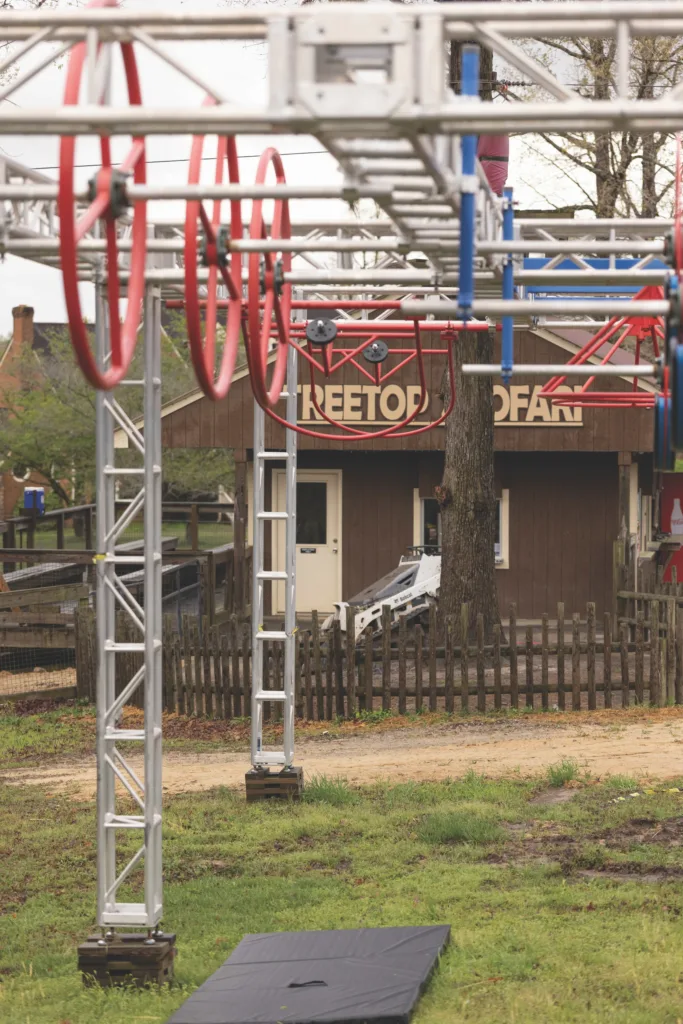
One of the many obstacles at the Metro Richmond Zoo used for ninja training.
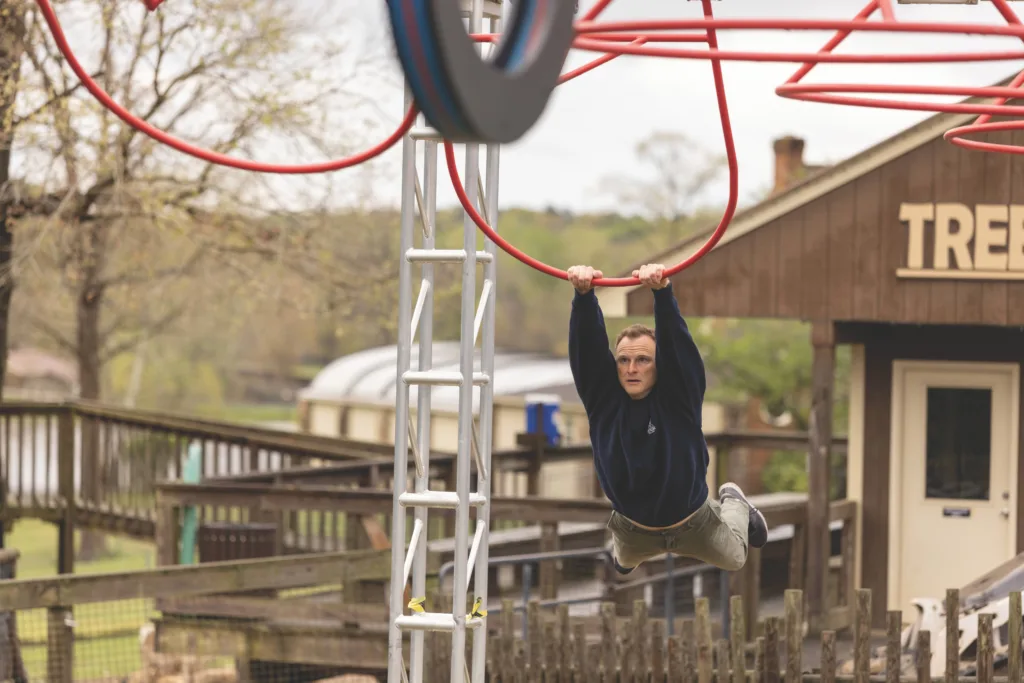
Andelin trains, swinging from bar to bar at the Metro Richmond Zoo.
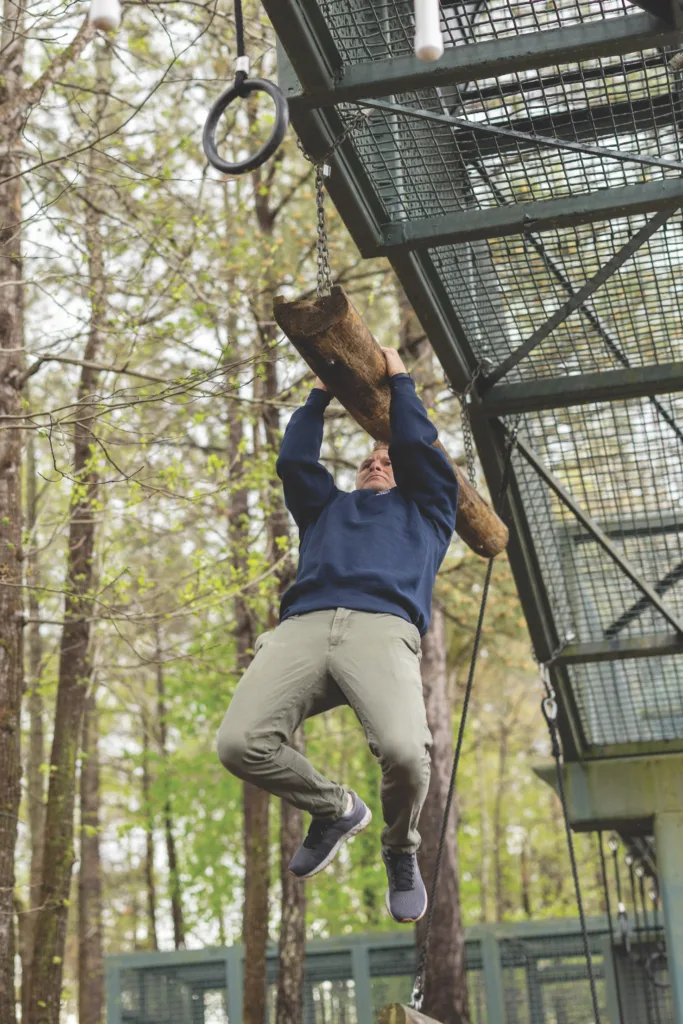
Andelin practicing grip
strength at the zoo.
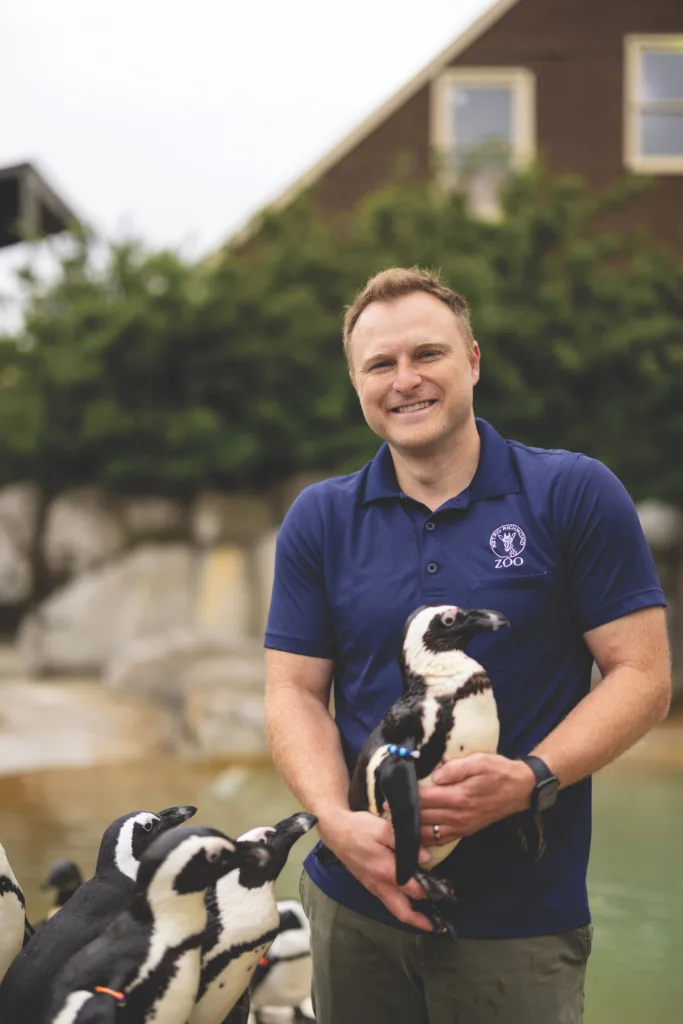
Andelin doubles as the Metro Richmond Zoo’s general manager. Here he mingles with a waddle of friendly African penguins.
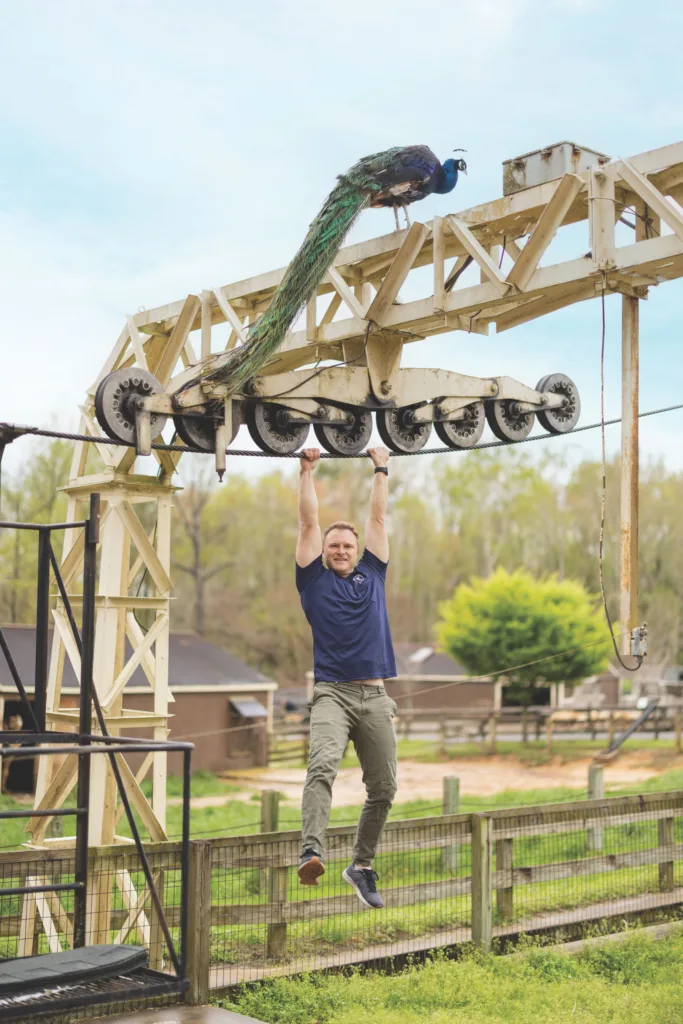
WHAT’S NEXT
After the lights, the adventure, and the falls, contestants return to their daily lives feeling energized, a sense of renewal that brings results. Andelin has created a bi-annual Ninja competition at the zoo. Arvold is preparing for her next international dressage competition, adding, “I know I have the courage, and if I do well, or badly, it doesn’t define me.” And the rest, well, they’re coaching the next generation of Ninjas.
Myths and legends are said to carry cultural values forward, and so the legacy of ANW may lie in presenting an alternative to agrarian American sports, which require a team, a ball, and field of play. In 1891, a peach basket was hung on a pole inside a gym—and look at basketball today. If ANW is our modern peach basket, the years ahead just might be astonishing.
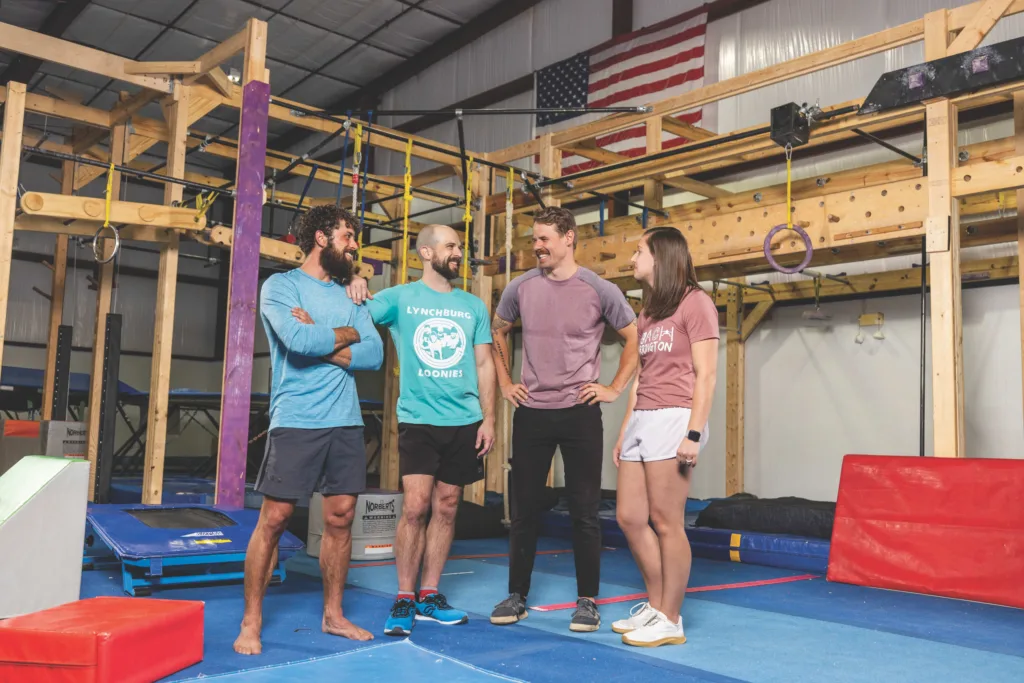
This article originally appeared in the June 2025 issue.
